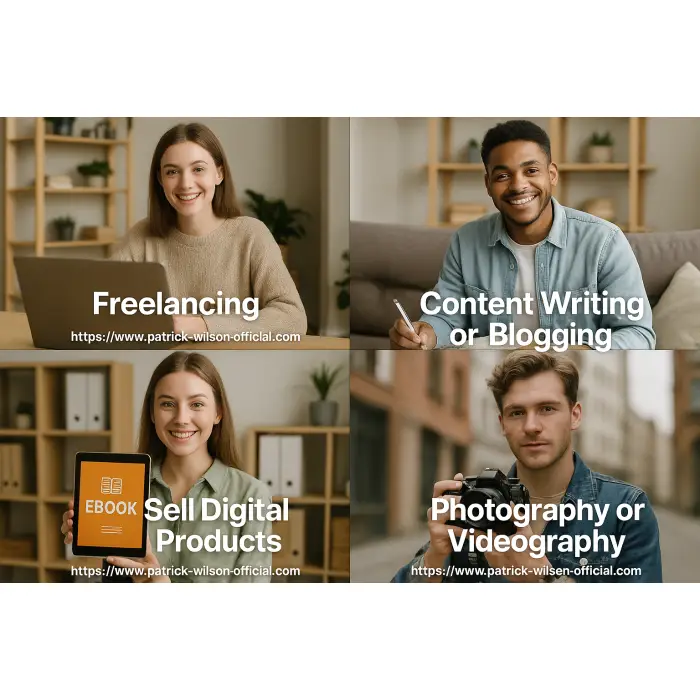Website Monetisation: The Complete Guide to Earning from Your Online Platform


Have you ever wondered how to turn your website into a revenue-generating machine? You’re not alone. Whether you’re a content creator, a fine artist, an online entrepreneur, or someone exploring digital income avenues, website monetisation opens up a world of financial opportunity. But with so many paths to explore, where do you begin?
In this comprehensive guide, we’ll unpack the most powerful ways to monetise your website in 2025 and beyond—whether you’re just starting or ready to scale. You’ll discover methods that align with your goals, your audience, and your passions.
Why Website Monetisation Matters in Today’s Digital Economy
In the evolving landscape of online business, having a website is not just about presence—it’s about purpose. With more people working remotely and shopping online, your website has the potential to serve as a full-time income source. Monetising it effectively can free you from the 9-to-5, increase your creative freedom, and help you build a brand that lasts.
For bloggers, artists, digital marketers, and e-commerce owners, monetisation isn’t just about placing ads—it’s about building value, creating trust, and converting attention into income.
1. Affiliate Marketing: Recommend and Earn
One of the most popular and accessible methods of website monetisation is affiliate marketing. It’s a strategy where you promote products or services via special tracking links and earn a commission for every sale made through your referral.
- Best for: Bloggers, niche content creators, review sites
- Tools you’ll need: Amazon Associates, ShareASale, Impact, Awin, or niche-specific networks
- Pro tip: Choose products you genuinely trust to maintain audience credibility
Learn more about how blog monetisation works and the role affiliate links play in long-term income generation.
2. Display Advertising: Passive Income at Scale
If your website gets decent traffic, you can monetise it through display ads. google adsense is the most recognised platform, but others like Ezoic and Mediavine offer higher RPMs and more personalisation.
Imagine a blog post earning you money every time a visitor sees an ad or clicks through. It’s not instant wealth, but with the right volume, it’s steady and scalable.
Explore our in-depth page on pay-per-click ad revenue strategies to maximise your CPM and ROI.
3. Selling Digital Products: Create Once, Earn Forever
Are you an expert in a subject? Do you create templates, art prints, eBooks, or courses? Selling digital products allows you to monetise your expertise with little to no ongoing cost. Examples include:
- Online courses on platforms like Teachable or Kajabi
- Printable planners or journals on Gumroad
- Licensable artworks or graphics on your site
Start and monetise a blog that supports your digital store, and you’ve got a funnel for passive, scalable income.
4. Sponsored Content: Get Paid to Share
With a strong niche and engaged audience, brands will pay you to feature their products or services. This works well for niche blogs, art platforms, and even portfolio websites that rank well in Google.
Sponsorships aren’t limited to blog posts. You can get paid for:
- Email newsletters
- Product reviews
- Mentions in podcast show notes
Build a media kit and set a rate card based on your traffic and niche authority. It’s a direct monetisation method that also builds industry relationships.
5. Offer Memberships and Subscriptions
Recurring revenue is the holy grail of monetisation. Platforms like Patreon, Buy Me a Coffee, and MemberPress allow you to charge a monthly fee for exclusive content, tutorials, or behind-the-scenes access.
This is especially effective for fine artists and creators who offer:
- Exclusive tutorials
- Process videos
- Private Discord/Telegram communities
6. Launch a Paid Newsletter
Email marketing is far from dead. It’s thriving. A curated, valuable newsletter with paid access tiers can be incredibly lucrative. Think of it as your own private media outlet.
Use platforms like Substack, ConvertKit, or Mailchimp to:
- Build a free subscriber base
- Offer premium newsletters for deeper insights or offers
7. Sell Physical Products or Art
If you’re an artist, photographer, or designer, consider selling physical products directly from your website. This could include prints, canvases, original artworks, or handmade crafts.
Integrate WooCommerce or Shopify to manage orders and logistics seamlessly. Pair this with a blog about fine art painting, or art and history, to create a narrative around your products.
8. Offer Freelance or Consulting Services
Your website can be your best salesperson. Create dedicated service pages where you offer:
- Web design, copywriting, SEO services
- Art commissions or portrait painting
- Coaching or mentorship
Optimise those pages for service-specific keywords, include testimonials, and keep your contact form front and centre. A well-optimised services page can attract organic traffic ready to convert.
9. Build a Niche Directory or Job Board
If your site attracts a community, why not offer a place for others to advertise? This could include:
- Job listings
- Freelancer directories
- Event boards for workshops or exhibitions
Charge a small fee per listing or offer premium placements. It’s a low-maintenance model that grows with your brand authority.
10. Monetise Through YouTube Embeds
Do you create video content? Embedding YouTube videos on your site helps you double-dip. You earn from YouTube ads while increasing engagement on your website.
Combine this with affiliate links, email opt-ins, or even product upsells to build a full funnel.
How to Choose the Right Monetisation Strategy
Not every strategy will fit your audience, niche, or personality. Here’s how to pick the best approach:
- Start with your audience’s needs. What problems are they trying to solve?
- Audit your strengths. Are you better at creating content, designing products, or offering services?
- Test multiple streams. Diversification reduces risk and increases earning potential.
Technical Tips for Effective Monetisation
Monetisation without optimisation is like planting seeds without water. Ensure you:
- Use fast-loading, mobile-optimised themes
- Install heatmaps (e.g. Hotjar) to monitor user behaviour
- Track conversions with Google Analytics 4
- SEO every blog post, page, and product for search visibility
Emotional Connection: Your Website, Your Freedom
Think back to why you started your website. Was it to share your passion? To create a legacy? To break free from the limitations of traditional employment?
Website monetisation is not just a set of tactics—it’s a transformative journey. It’s the bridge between what you love and how you live. Every blog post you write, every product you offer, and every email you send is a step closer to the freedom you envision.
Case Study: Patrick Wilson’s Monetisation Path
patrick wilson Official is more than a website—it’s a digital hub of ideas, fine art, and entrepreneurial vision. Through a blend of affiliate marketing, digital art sales, blog monetisation, and niche content creation, Patrick has built a sustainable income stream while empowering others to do the same.
From online business ideas to african art and historical narratives, the content blends storytelling with strategic monetisation techniques. The secret? Consistency, SEO, and understanding your audience's journey.
Common Mistakes to Avoid
Many new website owners struggle with monetisation due to:
- Rushing into ad placement without content volume
- Forgetting user experience—ads and pop-ups that annoy
- Using poorly aligned affiliate products
- Neglecting email capture and retargeting
Where to Go From Here
Monetising your website takes time, testing, and a willingness to evolve. But every monetisation method mentioned above is proven, scalable, and within your reach.
Start by assessing your current traffic, your audience’s needs, and your strengths. Then implement one strategy at a time, measure the results, and refine your approach.
Your website can earn while you sleep, scale while you create, and grow even as you focus on your passion.
Useful Links to Deepen Your Knowledge
- Start and Monetise a Blog
- How Blog Monetisation Works
- Pay-Per-Click Strategies
- Fine Art Painting
- Art and History
- Online Business Ideas
Now is the time to monetise your website—strategically, creatively, and authentically.


Comments